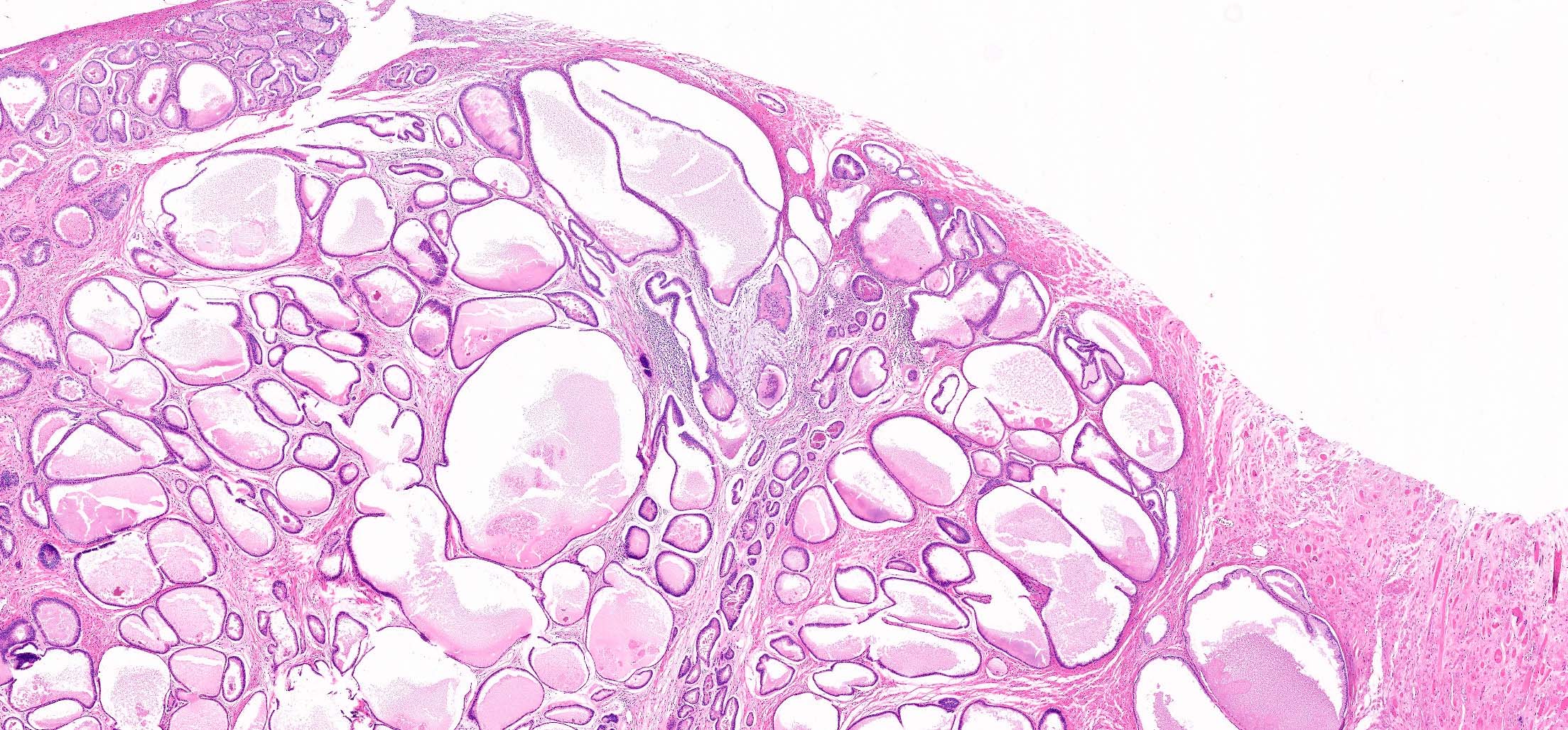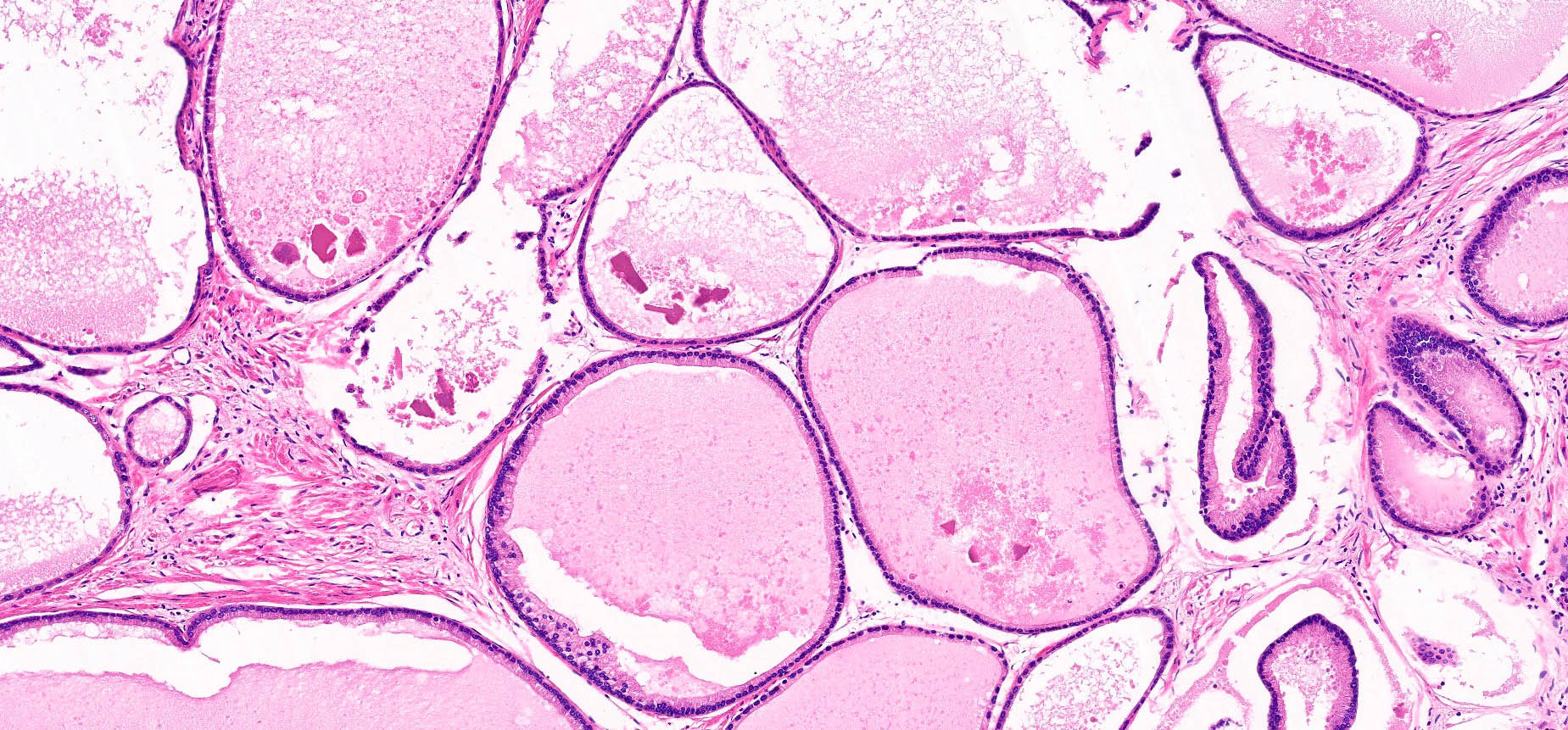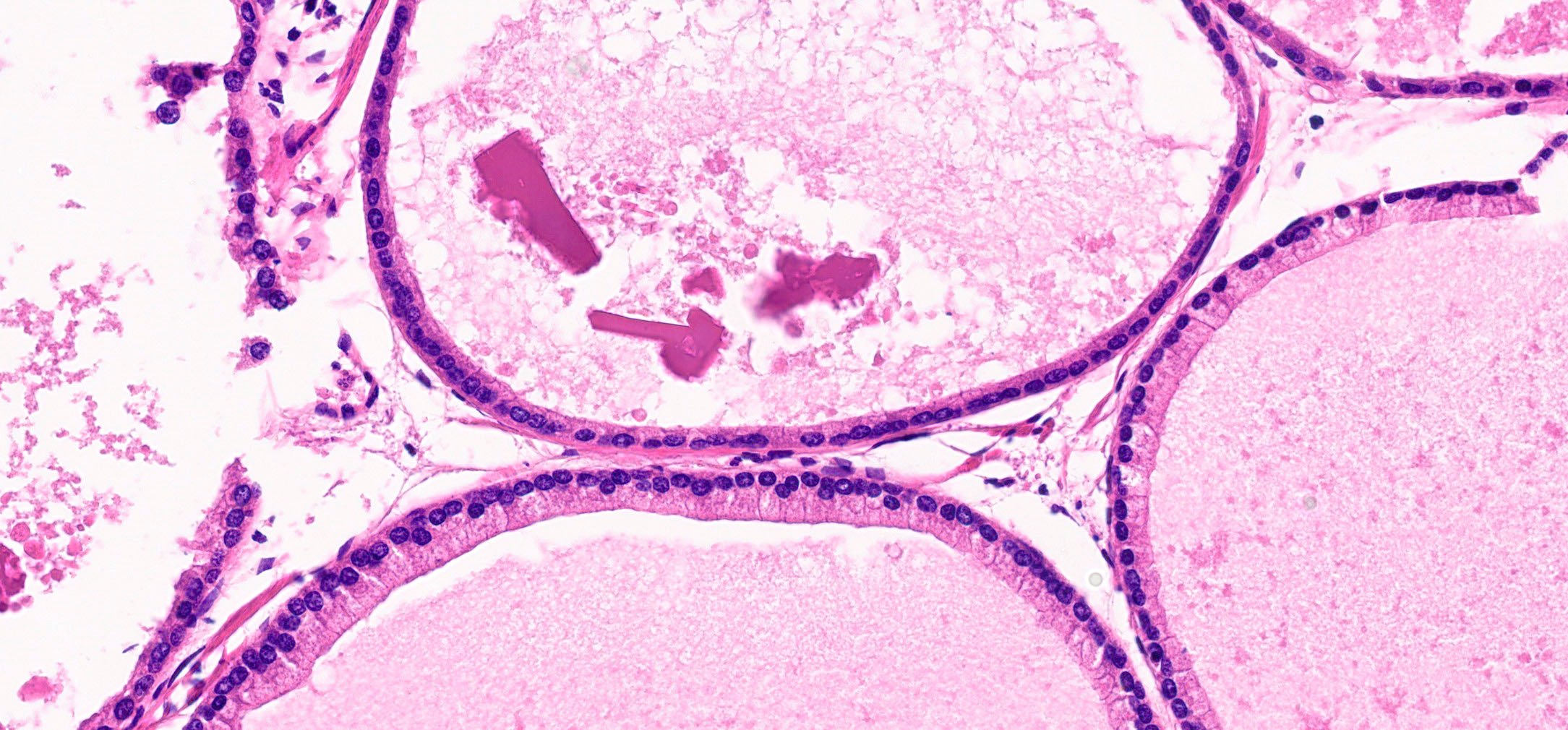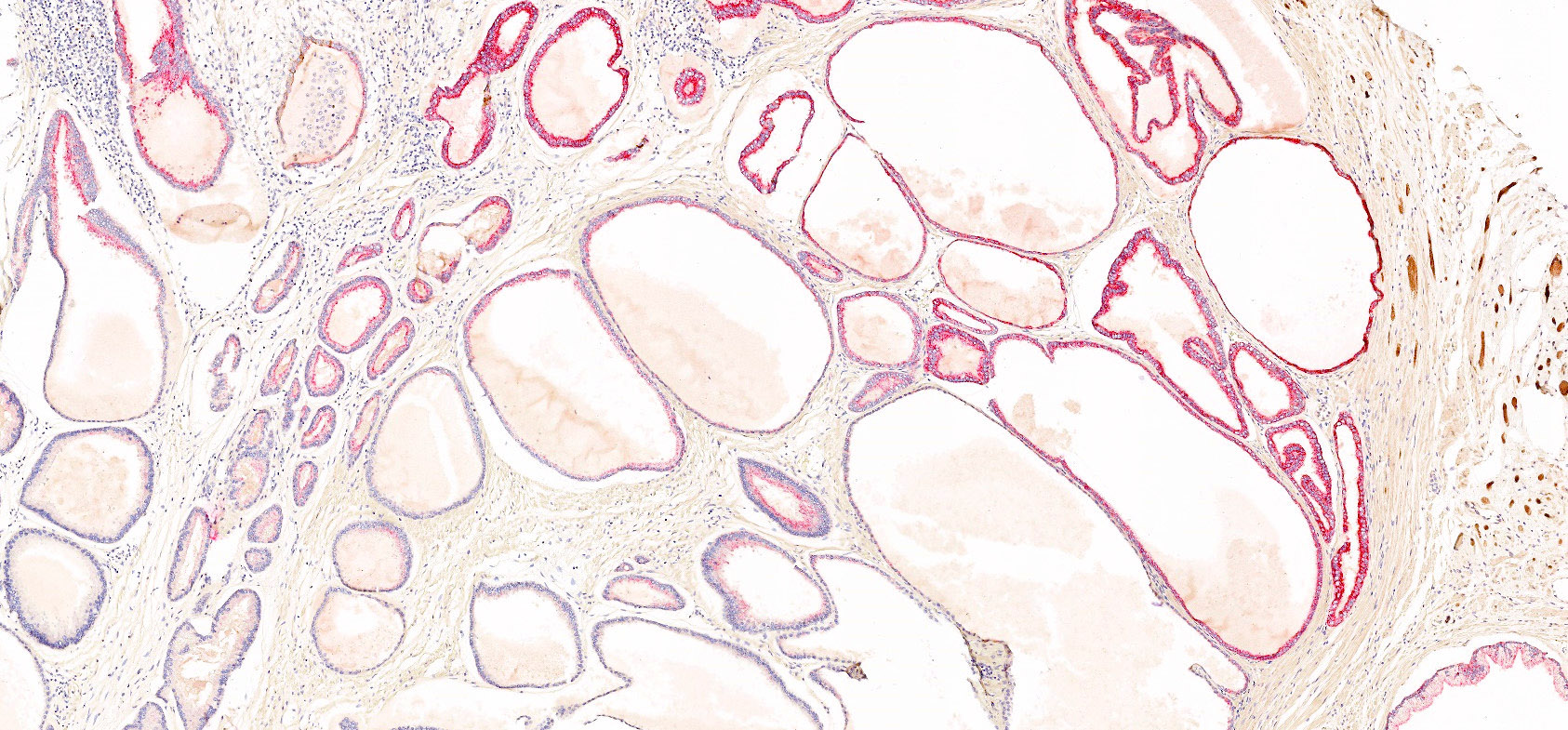Table of Contents
Definition / general | Essential features | Terminology | ICD coding | Sites | Diagnosis | Case reports | Microscopic (histologic) description | Microscopic (histologic) images | Positive stains | Negative stains | Sample pathology report | Differential diagnosis | Additional references | Board review style question #1 | Board review style answer #1Cite this page: Sangoi A. Microcystic adenocarcinoma. PathologyOutlines.com website. https://www.pathologyoutlines.com/topic/prostatemicrocystic.html. Accessed April 1st, 2025.
Definition / general
- One of the unusual histological patterns of acinar adenocarcinoma
- While often easier to recognize at radical prostatectomy given the juxtaposition to usual pattern acinar adenocarcinoma (incidence of 11%), deceptive morphology can be challenging to recognize on prostate biopsy (incidence of 1%) (Am J Surg Pathol 2010;34:556, Int J Surg Pathol 2020;28:584)
- As these are graded in the usual fashion, formal designation as microcystic pattern is not indicated in the pathology report and is more important to recognize for accurate diagnosis
Essential features
- Cystic glands with marked dilatation (reminiscent of cystic atrophy) at low power magnification but often showing luminal crystalloid, blue intraluminal mucin and prominent nucleoli at higher power magnification
Terminology
- Sometimes synonymous with pseudohyperplastic pattern prostatic adenocarcinoma
ICD coding
- ICD-O: 8140/3 - acinar adenocarcinoma
- ICD-10: C61 - malignant neoplasm of the prostate
- ICD-11: 2C82.0 & XH4PB1 - adenocarcinoma of prostate & acinar adenocarcinoma of prostate
Sites
- Prostate
Diagnosis
- Core needle biopsies or transurethral resection of the prostate
- Immunohistochemistry may be used to confirm the absence of basal cells
Case reports
- Limited series of atrophic / microcystic prostatic adenocarcinoma (Int J Surg Pathol 2020;28:584)
Microscopic (histologic) description
- Cystic glands with marked dilatation (reminiscent of cystic atrophy; glands can become quite attenuated), approximately 10x the size of typical malignant acini (Am J Surg Pathol 2010;34:556)
- Sometimes crowded growth at low power magnification but often showing luminal crystalloid, blue intraluminal mucin and prominent nucleoli at higher power magnification
- Typically coexists with usual acinar pattern prostatic adenocarcinoma
- One of the important deceptively bland histological patterns of prostate cancer, alongside atrophic, pseudohyperplastic and foamy gland prostatic adenocarcinoma
Microscopic (histologic) images
Positive stains
- AMACR (P504S) luminal expression in 96% of cases (Am J Surg Pathol 2010;34:556)
Negative stains
- Complete loss of basal cell reactivity (34 beta E12, p63) in 96% of cases (Am J Surg Pathol 2010;34:556)
Sample pathology report
- Same as typical acinar adenocarcinoma; it is not needed to report the presence of this histological pattern
- Prostate, radical prostatectomy:
- Prostatic adenocarcinoma, Gleason score 3 + 3 = 6, grade group 1 (see synoptic report)
Differential diagnosis
- Cystic atrophy:
- Lacks amphophilic cytoplasm, prominent nucleoli, luminal mucin / crystalloid
- While it may show patchy, cytoplasmic P504S staining, it shows retained basal cell reactivity (p63 / high molecular weight keratin)
- High grade prostatic intraepithelial neoplasia:
- While it may show luminal crystalloid, it typically lacks luminal mucin
- Basal cells are somewhat appreciable on H&E staining but immunohistochemistry shows retained basal cell reactivity (p63 / high molecular weight keratin)
- Atrophic pattern prostatic adenocarcinoma (including aberrant p63 positivity)
- Often shows reduced cytoplasm compared to microcystic pattern prostatic adenocarcinoma
- Can show aberrant nuclear staining for p63 in the tumor cells (absent p63 / high molecular weight keratin staining in basal cells)
Additional references
Board review style question #1
Which of the following statements is true regarding microcystic pattern prostatic adenocarcinoma?
- It is one of the patterns of prostatic adenocarcinoma that is excluded from grading
- It most closely mimics cystic atrophy but shows an immunoprofile of usual acinar adenocarcinoma (cytoplasmic P504S, loss of basal cell reactivity)
- It rarely shows luminal crystalloid or prominent nucleoli
- It shows atrophic glands with aberrant nuclear positivity for p63
Board review style answer #1
B. It most closely mimics cystic atrophy but shows an immunoprofile of usual acinar adenocarcinoma (cytoplasmic P504S, loss of basal cell reactivity). Answer A is incorrect because Gleason grading is applicable to microcystic pattern prostatic adenocarcinoma (graded on architecture, usually Gleason grade 3 + 3). Answer C is incorrect because it often shows luminal crystalloid with prominent nucleoli. Answer D is incorrect because it does not show features of p63 positive prostatic adenocarcinoma (atrophic glands with aberrant nuclear positivity for p63).
Comment Here
Reference: Microcystic adenocarcinoma
Comment Here
Reference: Microcystic adenocarcinoma










